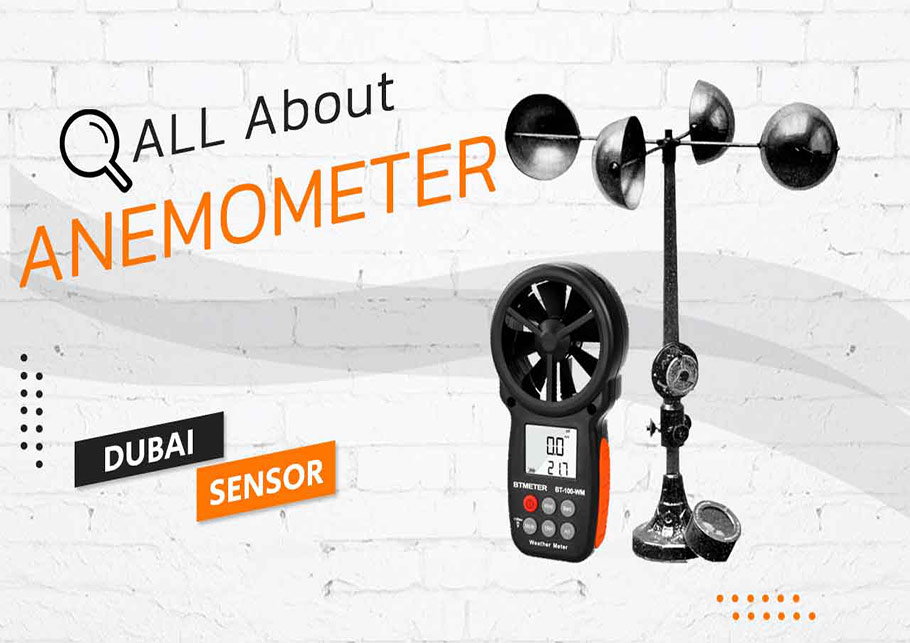Specialist Tips for Adjusting Your Anemometer for Optimum Efficiency
Specialist Tips for Adjusting Your Anemometer for Optimum Efficiency
Blog Article
Checking Out the Functions and Benefits of Anemometers for Weather Condition Fanatics and Experts
From mug anemometers to sonic anemometers, each type brings its unique collection of applications and advantages, losing light on numerous aspects of atmospheric conditions. As we dig into the features and benefits of anemometers, a deeper understanding arises not just of prevailing weather condition sensations yet likewise of the broader ramifications for markets like wind energy manufacturing and environmental study.
Significance of Anemometers in Weather Monitoring
Anemometers play a crucial duty in climate monitoring by offering precise dimensions of wind rate, aiding in forecasting and understanding weather condition patterns. These tools, varying from typical mug anemometers to contemporary ultrasonic anemometers, are vital for meteorologists, scientists, and weather enthusiasts alike.

Sorts Of Anemometers and Their Applications
The most common types of anemometers consist of cup anemometers, vane anemometers, hot-wire anemometers, and ultrasonic anemometers. Mug anemometers are composed of 3 or 4 cups placed on straight arms that rotate with the wind, gauging its speed. Vane anemometers, on the various other hand, make use of an easily rotating vane to line up with the wind direction, supplying both wind speed and direction dimensions.
Each kind of anemometer has its unique benefits and applications. Cup anemometers are ideal and durable for general climate monitoring, while vane anemometers are favored for directional dimensions. Hot-wire anemometers are delicate to reduced air rates, making them optimal for interior atmospheres. Ultrasonic anemometers are non-intrusive and use high precision, usually made use of in study and specialized weather surveillance applications. Understanding the characteristics and applications of each sort of anemometer is vital for selecting the most appropriate instrument for details weather checking needs.
Benefits of Making Use Of Anemometers in Projecting
In weather forecasting, the utilization of anemometers supplies important benefits for boosting the accuracy of weather forecasting. Anemometers measure wind rate and instructions, supplying essential information for anticipating weather patterns. By incorporating wind data right into projecting designs, meteorologists can better understand the movement of climate systems, prepare for adjustments in atmospheric conditions, and problem extra exact forecasts.
Furthermore, anemometers play a vital function in evaluating potential weather hazards. Keeping an eye on wind rates helps forecasters predict extreme climate events such as typhoons, tornadoes, and wintertime tornados with higher accuracy. This very early warning system makes it possible for authorities to release prompt alerts and implement essential security procedures, decreasing the risks to life and building.
Furthermore, anemometers help in enhancing renewable energy production. By evaluating wind patterns, meteorologists can identify appropriate areas for wind farms and forecast energy output, adding to the effective generation of wind power.

Anemometers in Wind Power Production
Given the crucial duty anemometers play in supplying precise wind information for climate forecasting and danger assessment, their importance reaches the world of wind power manufacturing. Anemometers are necessary tools in the area of wind energy, where the dimension of wind rate and instructions is essential for establishing the feasibility and efficiency of wind generator installations. By precisely you can check here determining wind rates at differing elevations, anemometers aid maximize the positioning and style of wind generators to take full advantage of power outcome.
In wind farms, anemometers are purposefully positioned to accumulate real-time wind information that is made use of to examine the possible power manufacturing of a site. This data is important in determining the economic practicality of wind energy tasks and in forecasting power generation to make certain grid stability. Additionally, anemometers aid in keeping track of wind problems to enhance wind turbine performance, prevent damages from high winds, and ensure the security of employees operating in the area of wind turbines.
Enhancing Weather Recognizing With Anemometers
:max_bytes(150000):strip_icc()/GettyImages-186864034-58e3355e5f9b58ef7e576b44.jpg)
Anemometers play a crucial duty in boosting our understanding of microclimates. These local weather condition conditions can vary substantially from wider regional forecasts, making it necessary to have accurate data for specific locations. anemometer. By purposefully positioning anemometers in numerous places, researchers can gather comprehensive information on how wind acts in various surfaces, metropolitan environments, or bodies of water
Moreover, anemometers add to enhancing weather condition forecasting versions by giving real-time information on wind habits. This information is specifically beneficial for forecasting serious weather condition events, maximizing farming practices, and sustaining sectors like air travel and maritime navigating. Overall, anemometers are important tools that allow us to dig much deeper right into the complexities of climate systems, inevitably causing more better-informed choices and accurate forecasts.
Conclusion
In verdict, anemometers play a critical role in weather surveillance and forecasting by measuring wind rate and direction. They are essential devices used by weather condition fanatics and professionals to find gather precise information for forecasting weather condition patterns and evaluating possible influences. Anemometers also have applications in wind power manufacturing, further highlighting their importance in both weather forecasting and renewable resource fields. Overall, anemometers add to boosting our understanding of weather sensations and boosting forecasting abilities. anemometer.
From mug anemometers to sonic anemometers, each kind brings its one-of-a-kind collection of benefits and applications, losing light on numerous facets of climatic conditions. These tools, varying from conventional cup anemometers to contemporary ultrasonic anemometers, are vital for meteorologists, scientists, and climate lovers alike. The most typical types of anemometers include mug anemometers, vane anemometers, hot-wire anemometers, and ultrasonic anemometers. Mug anemometers are appropriate and robust for basic climate surveillance, while vane anemometers are preferred for directional dimensions. Anemometers are important instruments in the field of wind power, where the measurement of wind great post to read rate and instructions is essential for figuring out the usefulness and performance of wind generator installments.
Report this page